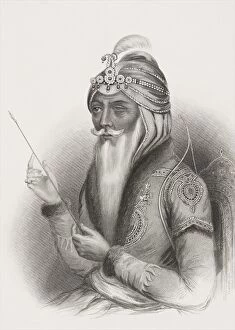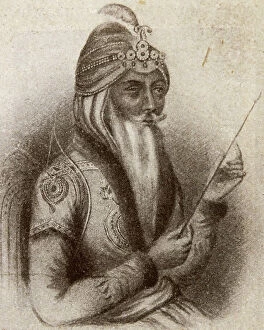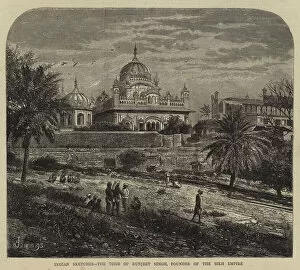Sikh Empire Collection
The Sikh Empire, led by the legendary Maharaja Ranjit Singh, was a formidable force that left an indelible mark on history
All Professionally Made to Order for Quick Shipping
The Sikh Empire, led by the legendary Maharaja Ranjit Singh, was a formidable force that left an indelible mark on history. From the stunning portraits in the Gallery of Historical Portraits to the intricate battle plans of Aliwal and Sobraon, this empire's legacy is one of strength and strategic brilliance. Indian Sketches take us back to the tomb of Runjeet Singh, the visionary founder of the Sikh Empire. The engravings capture both his grandeur and his impact on Punjab. Hostilities in the Punjaub depict a pivotal moment when Sikhs were overthrown, showcasing their resilience even in defeat. Runjeet Singh himself can be seen in another engraving with his suwarree encamped under a majestic banian tree on the River Sulley. This image reflects not only his power but also his connection to nature and spirituality. Maharaja Sher Singh continues this rich tapestry as we witness him enjoying a captivating dance performance with his companions. These glimpses into their lives humanize these historical figures and remind us that they too appreciated artistry and culture. Aliwal comes alive through a colored engraving, reminding us of its significance as a battleground where brave warriors fought for their beliefs. Thackwell at Sobraon showcases yet another crucial moment in Sikh history when General Thackwell played an instrumental role. The Darbar of Maharaja Ranjit Singh transports us to an opulent court setting where power dynamics were at play amidst lavish surroundings. It serves as a testament to Ranjit Singh's ability to command respect from all who entered his presence. Meetings between Maharaja Sher Singh and British Ambassador Clark highlight diplomatic efforts during turbulent times. These encounters shed light on complex relationships forged amidst political tensions. Lastly, we glimpse into daily life within Punjab through Saltykov's artwork depicting Maharaja Sher Singh surrounded by courtiers. These intimate scenes offer insight into royal routines while showcasing the opulence and grandeur of the Sikh Empire.
















